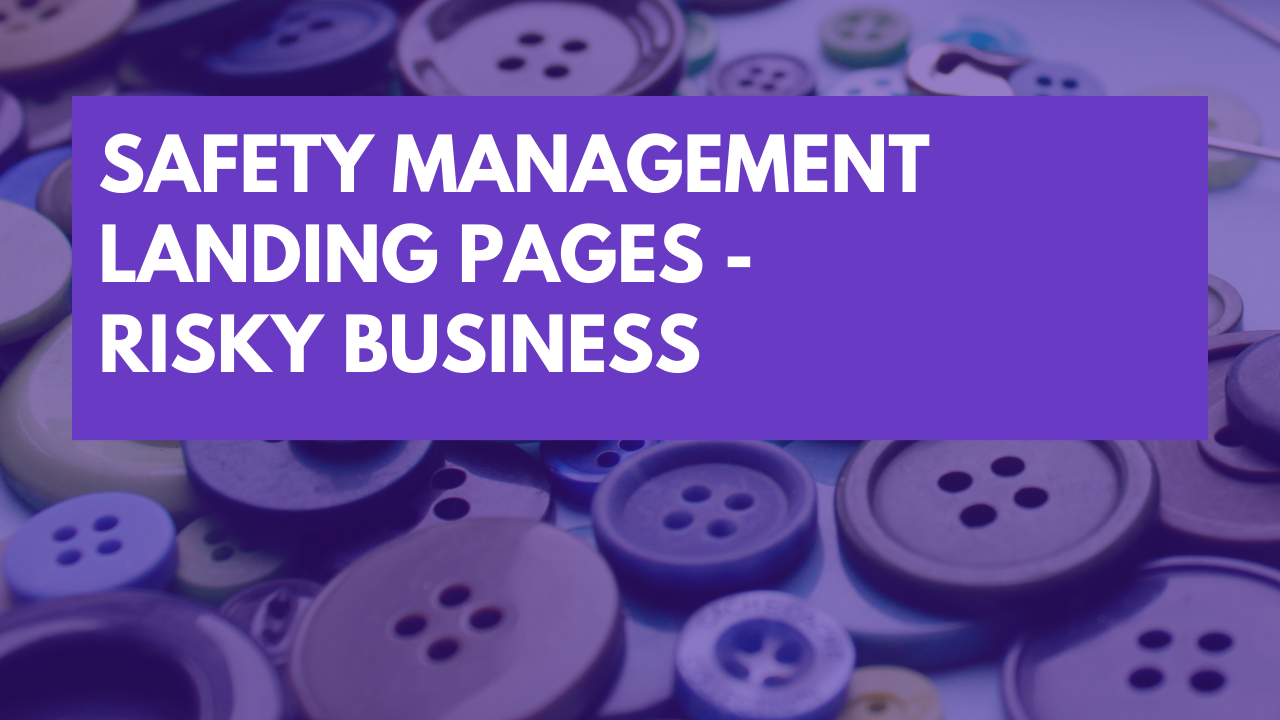A compliance and safety management sector client asked me to review their homepage/landing page to improve the overall message and encourage visitors to take action.
If I haven’t worked on the client’s marketing content before, I know there will be deep-rooted issues already within the landing page.
Often the same problems recur from one B2B service website to another. The imagery will not reflect the client’s market positioning or audience, customer outcomes will be undermined by features and benefits, and social proof will be irrelevant or underutilised.
Rewriting a web page is not the best start to reviewing market orientation or any deeper marketing issues but it is often where that conversation starts. I find it very difficult to simply re-write nonsensical, lacklustre content without giving my opinion about the content’s logic and premise. So, inevitably, ‘a quick look at the landing page’ ends up as an existential examination of the client’s market position.
Below are a few of my thoughts on this recent gig.
Market segmentation
In the example of my safety management client, we’d identified a specific element of his current client base that the landing page was to focus on: an audience new to compliance who needed guidance on the basics.
This positioning allows for growth, comes with plenty of content ideas and gives a good reason for an affordable pricing matrix. My client’s product contained elements catering to newcomers in safety management. So I encourage the owner to double down on the segment.
Hero section
The hero section is usually where the rot begins. Attempting to summarize your service in 100 or 200 words is difficult if you are also attempting to appeal to as many people as possible. Any opening paragraphs are filled with so much generic blandness or confusing double-speak. I imagine often that the business knew what they meant when they were writing the words but increasingly as time goes by I suspect they forgot what their intention was.
My client’s hero section focused on a service that was quick, online and initially free. I gave it a rename, emphasized a speedy onboarding experience and intuitive interface and described it as a perfect introductory system where the learning curve is entirely appropriate for beginners. It seems to me that safety management and compliance officers are up against internal resistance within their respective companies. They are often seen as a cost centre that just produces more work to do. If I’m wrong let me know. Anyway, presenting safety personnel with easy wins (like clear, relevant reporting tools) to show to their monthly management meeting is a relevant client outcome.
Using images
On the original client website, two styles of images conflicted with each other. One style used stock photography of typical corporate scenes and the other style was a series of commissioned line artwork containing simple cartoon drawings on the subject of safety management.
I don’t recommend using stock imagery for B2B sites for two main reasons. Firstly, I see too many sites showing the same images. Embarrassing. Secondly, I rarely see the intended audience within the stock images.
Stock imagery can be useful as background messaging, setting the scene. But they would have to be pretty exceptional pictures for me to want to distract leads from reading my content.
My client’s pre-existing artwork had elements of the elementary in it which I thought went well with the beginner’s guide feel to our message. In addition, the uniqueness of the commissioned artwork stood out from the competition. And the cartoons did contain references to the day-to-day experiences of safety management
Social proof
Everybody says you gotta have social proof. Testimonials, quotes, and customer company logos are valid and valuable presences on most pages. But there are testimonials and there are testimonials and they are still subject to the same rules as the rest of the page content: are they specific, are they relevant? Social proof should refer to the main hero premise as closely as possible.
Social proof should also reflect your ideal customer. I prefer a shorter quote that is specific to your service than a long quote that loses the reader halfway through. Don’t be afraid to cut a long quote down to highlight specificity.
It’s hard to gather direct quotes from customers that are appropriate but worth trying. Just one line that hits the nail on the head will get used time and time again.
CTA buttons
There is plenty of research discussing the placement of call-to-action buttons, what size shape or colour they should be, what they should say, and how many to have on a landing page. For SaaS services, the options are usually to book a demo or complete an inquiry form. Alternatives that require less commitment from a visitor are becoming more popular. Watching a product video for example.
I don’t tend to get embroiled in the science of the buttons: we all know how to review a scanned website page. But I would recommend you don’t get too clever with your call to action, stick to the recognised and understood customer journeys of your industry.
You can hire me. To get started on fixing that website of yours. Right now.
#safetymanagement #b2bmarketing #compliance #OSHA #HSE
